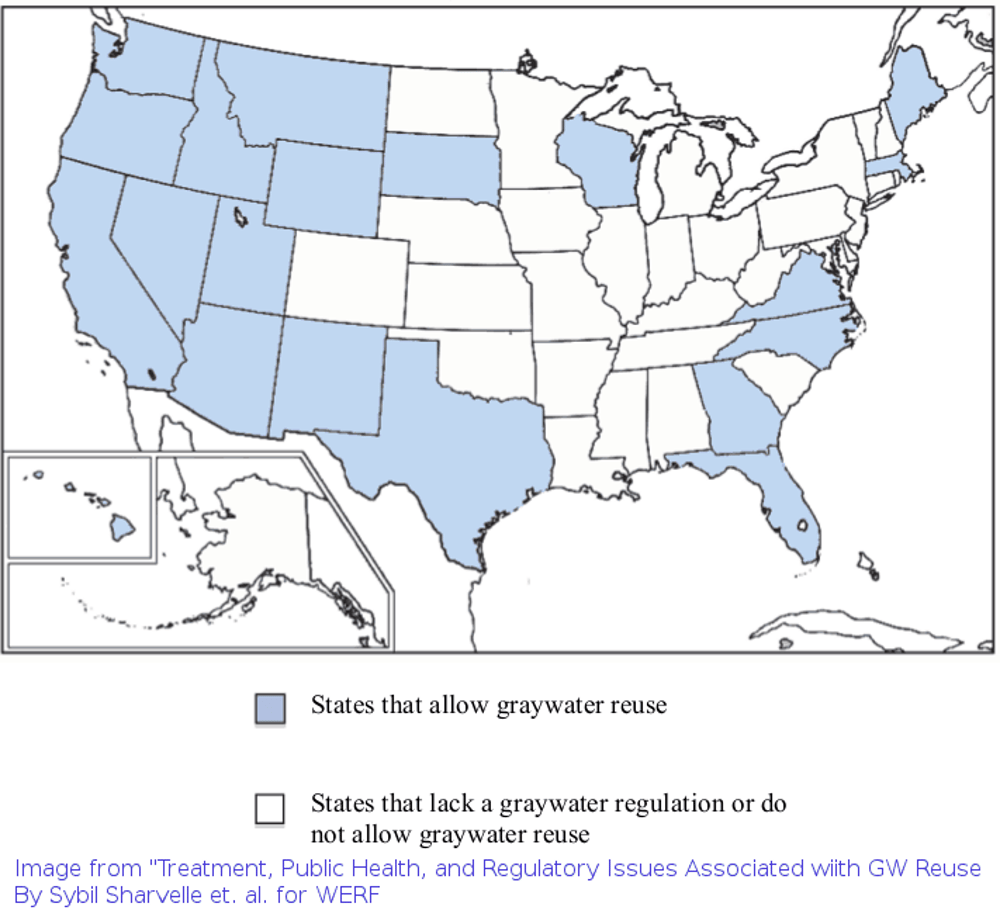Graywater Systems

This tip is more of an expensive one and pertains to more arid regions, but can be useful regardless. Graywater systems are an excellent way to reuse moderately clean wastewater (not from any source that may cause a human health risk such as a toilet or dishwasher). This eliminates the need to irrigate gardens and lawns with potable water and allows the water you use in your shower, for example, to be used more than once. Not only is that water used for multiple purposes, but it also returns to local aquifers, reinforcing the natural water cycle.
These systems are excellent for anyone who lives in a more arid climate and wants to cultivate a lush yard, garden, or small-scale farm without using excessive amounts of water. Wetter climates, however, cannot benefit as much from these systems due to their already sufficient plant-growing environment.
To install a graywater system, first contact your local health department to determine if they offer a graywater program. Then, acquire a Wastewater Professional who will tailor your graywater system to your landscape and to your existing plumbing and wastewater systems. Of course, if you still want the benefits of using graywater for irrigation but without the upfront costs of installing a system, you can simply collect shower water in a bucket and use that for irrigation or for flushing toilets.
For reference on graywater regulations, see the map to the left.
For individual state guidelines, reference the link below:
Resources:
Information:
Brain, Roslynn, et al. “Graywater Systems – Utah State University Extension | USU.” Utah State University Extension Sustainability, Graywater Systems, May 2020, extension.usu.edu/permaculture/files/Graywater-Systems.pdf.
Santa Clara Valley Water. “About Graywater.” Santa Clara Valley Water, Santa Clara Valley Water, 2022, www.valleywater.org/saving-water/outdoor-conservation/about-graywater.
Committee on the Beneficial Use of Graywater and Stormwater: An Assessment of Risks, Costs, and Benefits; Water Science and Technology Board; Division on Earth and Life Studies; National Academies of Sciences, Engineering, and Medicine. “Appendix B: Summary of State Laws and Regulations for Graywater and Stormwater.” Using Graywater and Stormwater to Enhance Local Water Supplies: An Assessment of Risks, Costs, and Benefits, by Committee on the Beneficial Use of Graywater and Stormwater: An Assessment of Risks, Costs, and Benefits; Water Science and Technology Board; Division on Earth and Life Studies; National Academies of Sciences, Engineering, and Medicine, National Academies Press, 2016, pp. 201–206. National Academies, nap.nationalacademies.org/catalog/21866/using-graywater-and-stormwater-to-enhance-local-water-supplies-an.
Images:
Allen, Laura. “Greywater Codes and Policy.” Greywater Action, Greywater Action, 7 July 2017, greywateraction.org/greywater-codes-and-policy/.
Water Wise Group. “Greywater Systems in Residential Homes.” Water Wise Group, Water Wise Group, 15 Nov. 2016, waterwisegroup.com/greywater-education/greywater-systems-in-residential-homes/.